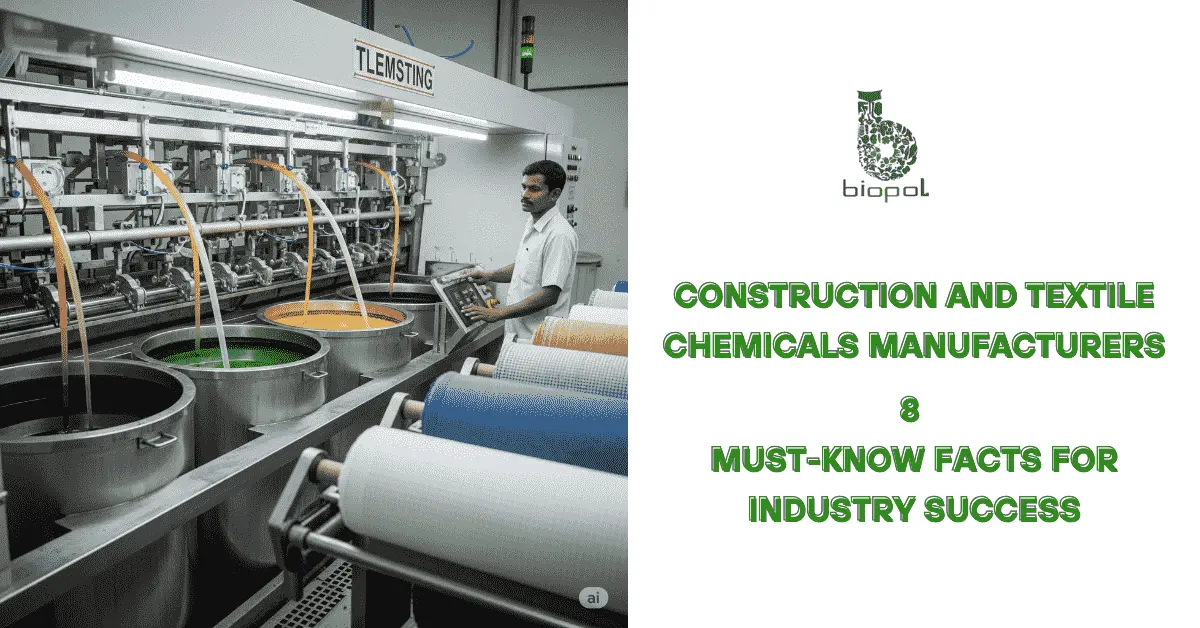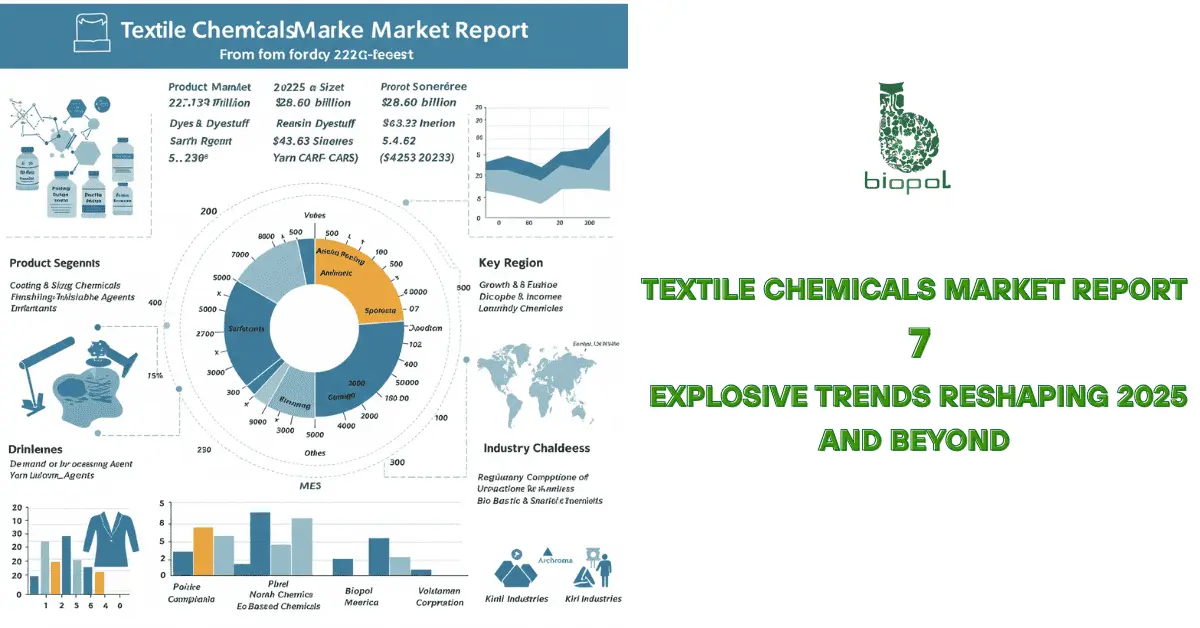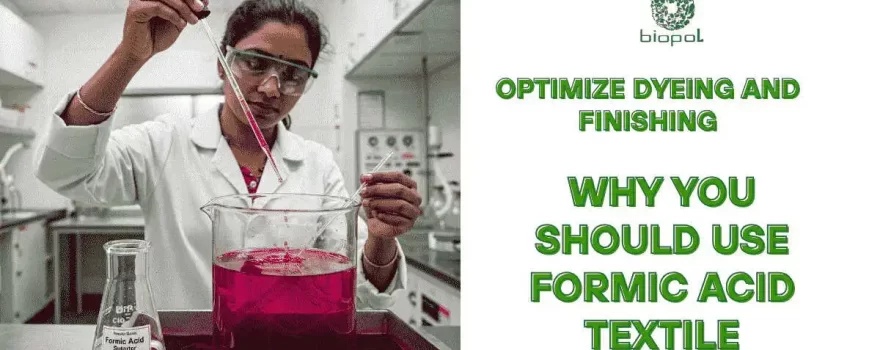
Use formic acid textile chemicals to achieve efficient dyeing, better pH control, and sustainable processing in modern textile manufacturing. Chemically identified as methanoic acid, formic acid plays a key role in processes such as dyeing, finishing, and pH adjustment. Its small molecular structure delivers high effectiveness—making it suitable for neutralizing alkali, improving dye fixation, and enhancing fabric brightness.
Table of Contents
Use Formic Acid Textile Chemicals
Use formic acid textile chemicals to achieve consistent quality and control across essential stages of textile manufacturing. Proper usage of formic acid reduces the need for reprocessing, maintains fabric strength, and supports cleaner wastewater output. In textile operations, chemical precision is critical—formic acid remains a dependable component in achieving that standard.
Formic Acid in Dyeing and Printing
Use formic acid textile chemicals to gain better control over dyeing and printing outcomes. Their role goes far beyond basic pH regulation—they’re vital to achieving deep color penetration, clean fabric-dye bonding, and long-lasting colorfastness. Whether working with cotton, synthetics, or blends, processors who use formic acid textile chemicals see fewer re-dyes, smoother finishes, and higher batch consistency.
Core Functions When You Use Formic Acid Textile Chemicals
| Function | Why It Matters |
| pH Control | Stabilizes the dye bath for better dye uptake and fixation |
| Reducing Agent | Converts vat and sulfur dyes into their soluble forms |
| Dye-Fiber Bonding | Strengthens the attachment of dye molecules to fabric |
| Even Application | Prevents uneven tones, streaks, and blotchy finishes |
| Migration Control | Limits unwanted dye spread, especially in fine prints |
When you use formic acid textile chemicals, you create optimal dyeing conditions. The right pH is non-negotiable, especially for acid and reactive dyes. Printing also benefits—formic acid helps secure sharper image quality by stabilizing the color chemistry during fixation.
Other Industries That Use Formic Acid Textile Chemicals
| Industry | Application |
| Food | Acts as a preservative in meat, dairy, and baked goods |
| Leather | Used as part of the tanning and pickling process |
| Pest Management | Applied to control insects like mites and ants |
| Rubber | Functions as a latex coagulant |
| Pharmaceuticals | Works as a solvent and synthesis reagent |
Professionals use formic acid textile chemicals because they deliver reliability without overcomplication. In any setting—textile or otherwise—efficiency matters. In textiles, though, the effect is visible in every finished roll.
Safer Scouring and Finishing
Use formic acid textile chemicals during scouring and finishing to streamline processes without sacrificing environmental safety. These chemicals replace harsher acids and heavy-duty alkalis, delivering efficient fabric treatment with fewer residues and lower emissions. Cleaner results, gentler on fibers, and far less corrosive—formic acid brings balance to fabric preparation and final-stage processing. For a broader perspective on strategically employing various chemicals to achieve efficiency and sustainability, explore our article: Use Different Chemicals Textile Chemicals: 7 Essential Strategies.
Why Use Formic Acid Textile Chemicals in Scouring?
| Benefit | Impact on Fabric Processing |
| Mild Acidic Action | Removes waxes and oils without fiber damage |
| Easy Neutralization | Reduces water usage and post-wash load |
| Biodegradable Residue | Cuts down on wastewater toxicity |
| Compatible with Enzymes | Supports bio-scouring and eco-cert compliance |
Harsh scouring often weakens fabric integrity. Use formic acid textile chemicals instead—less degradation, more softness, and better whiteness retention. It preps the fabric right, setting the stage for flawless dyeing or printing.
In Finishing, Why Does Formic Acid Matter?
| Finishing Step | How Formic Acid Helps |
| Final pH Correction | Neutralizes alkali without over-acidifying |
| Softener Compatibility | Improves uptake of silicone and cationic softeners |
| Durable Hand Feel | Maintains comfort, reduces chemical roughness |
| Process Stability | Lowers reaction variability batch to batch |
Use formic acid textile chemicals to meet both performance and sustainability benchmarks. With tighter global standards breathing down our necks, that’s not optional—it’s survival.
Versatile Uses of Formic Acid in Textiles
Use formic acid textile chemicals across multiple touchpoints in production—not just dyeing and finishing. Their value runs deeper. Whether adjusting pH, aiding in fiber conditioning, or acting as a catalyst in fabric treatments, formic acid delivers consistency without the mess that heavier chemicals leave behind. Fewer side reactions, faster throughput, and lighter environmental load—that’s a win in any production setting.
Diverse Applications of Formic Acid in Textile Processes
Dyeing Leveling Agent:
- Ensures even dye penetration, especially on wool and nylon.
- Prevents blotches and uneven tones.
- · Improved Colorfastness:
- Contributes to longer-lasting, wash-resistant color.
Shade Consistency:
- Provides consistent color matching across batches by controlling acidity.
Post-Alkaline Neutralization:
- Safely resets pH after alkaline treatments without damaging the fabric.
Fabric Texturing:
- Helps achieve specific fabric textures like crinkle or crisp handfeel.
Mordanting Support:
- Enhances dye affinity during certain dyeing processes.
Enhanced Dye Affinity:
- Improves dye bonding to fibers, reducing waste and achieving better saturation.
Biodegradable Choice:
- A more eco-friendly alternative to mineral acids like HCl or sulfuric acid.
Tactile Adjustments:
- Influences fabric feel, making it softer or firmer depending on the treatment.
Visual Effects:
- Impacts fabric sheen, uniformity, and finish clarity.
Where Else Are Formic Acid Textile Chemicals Used?
| Application Area | Functionality |
| Wool Carbonizing | Helps remove vegetable matter without damaging delicate fibers |
| Bleaching Neutralization | Acts as a gentle acidifier post-bleaching |
| Resin Treatment Processes | Controls pH for optimal crosslinking performance |
| Desizing | Assists in enzyme-based desizing through pH regulation |
| Coating Pre-treatment | Prepares fabric surface for better binder adhesion |
| Fiber Softening | Supports softener distribution by stabilizing bath pH |
Wool? It needs care. Use formic acid textile chemicals to strip impurities gently, without burning the fiber. Synthetic blends? They need precise control during resin curing. Again, formic acid steps in without bringing the baggage of mineral acids.
Manufacturers looking for smooth, repeatable, and eco-compliant results keep coming back to formic acid. It’s versatile, dependable, and quietly essential to textile chemistry.
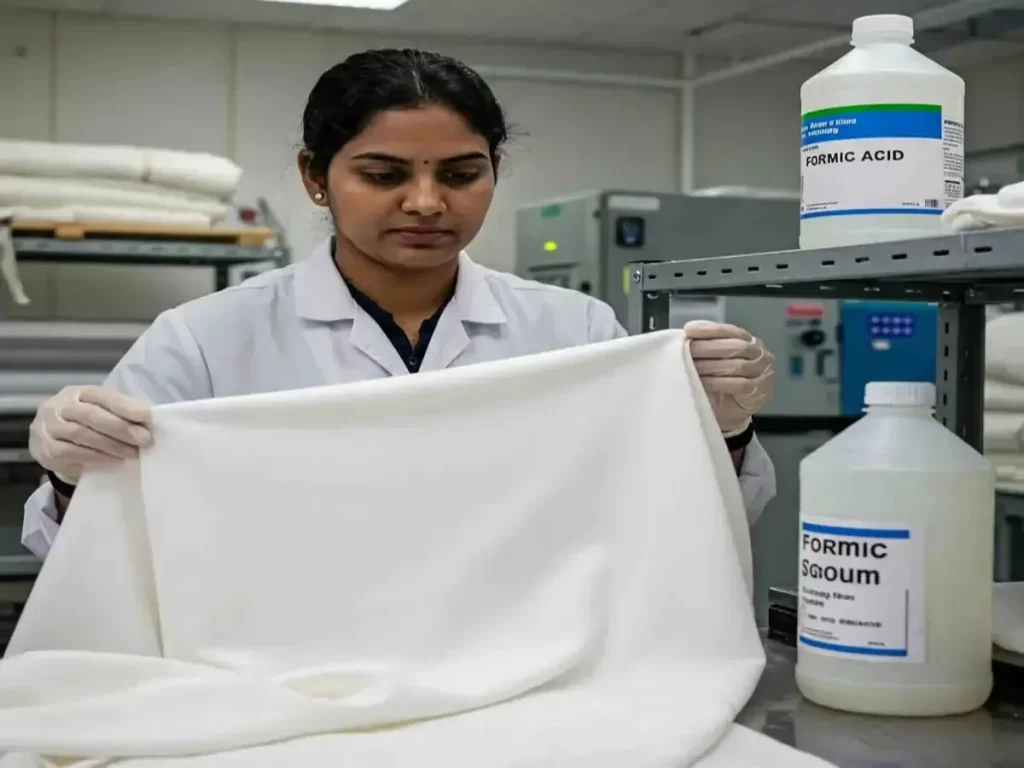
Sourcing Quality Formic Acid for Textiles
When looking to buy high-grade formic acid for textile applications, it’s essential to focus on both reliability and performance. Below is a comprehensive guide to help navigate the process:
- Choose Reputable Suppliers
- Check Certifications and Compliance
- ISO Certifications: Ensure the supplier follows industry standards like ISO 9001, which guarantees quality management practices.
- Eco-Friendly Certifications: If environmental responsibility is a priority, check for certifications like REACH or GOTS, ensuring compliance with eco-friendly standards.
- Evaluate Purity and Concentration
- Purity Levels: Formic acid comes in various grades. Ensure that the formic acid you buy has the right purity for textile processing (typically 85% concentration for industrial use).
- Supplier Specifications: Always ask for detailed product specifications, including concentration and possible impurities, to ensure consistency and quality.
- Consider Bulk Orders
- Volume Discounts: For large-scale textile operations, purchasing in bulk can lead to significant savings. Suppliers often provide discounts for large quantities.
- Storage and Handling: Ensure you have proper storage facilities for large quantities of formic acid, as it is a corrosive substance that requires appropriate safety measures.
- Price Comparison
- Request Quotes: Contact multiple suppliers for quotes and compare prices, ensuring you get the best deal without compromising on quality.
- Market Research: Research prevailing market prices for formic acid to ensure you’re not overpaying.
- Customer Reviews and Recommendations
By thoughtfully assessing these elements, you can identify a trustworthy source for formic acid, which will facilitate seamless and effective textile manufacturing operations.
Boosting Efficiency with Formic Acid
Integrating formic acid into textile manufacturing processes not only enhances product quality but also drives significant improvements in efficiency and cost savings. Here’s how:
- Hydrogen Production: Acts as a liquid hydrogen carrier; easily dehydrogenated using Pd catalysts for clean energy.
- Fuel Cells (DFAFCs): Powers direct formic acid fuel cells with high efficiency (up to 106%) and low fuel crossover.
- CO₂ Reduction: Enables electrochemical and photocatalytic conversion of CO₂ into useful formic acid—supports carbon capture efforts.
- Textile Dyeing: Improves dye fixation, shade uniformity, and colorfastness, optimizing processing time and reducing chemical waste.
- Biomass Conversion: Can be produced from renewable sources, contributing to sustainable industrial practices.
Formic acid is efficient, eco-friendly, and cost-effective—ideal for both advanced textile processing and sustainable tech applications..
Benefits of Using Formic Acid in Textiles
Opting to use formic acid textile chemicals provides distinct advantages when navigating environmental, safety, and compliance frameworks in textile processing.
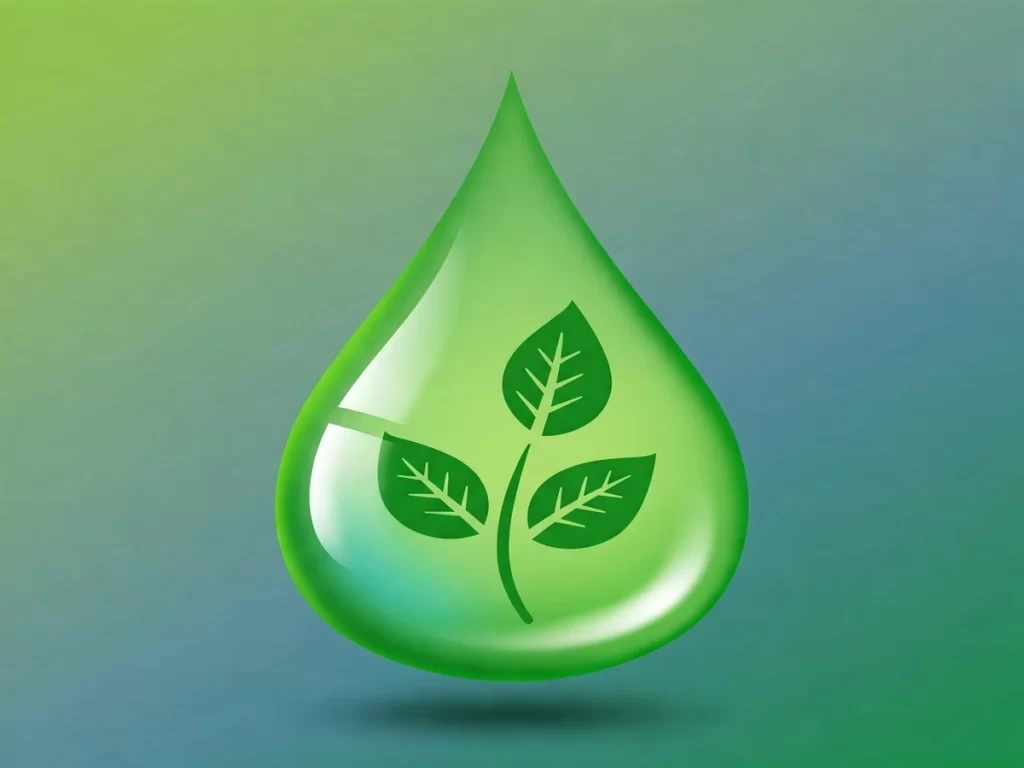
Environmental Advantages
- Biodegradability: Formic acid naturally breaks down into carbon dioxide and water, making it less persistent in wastewater systems. This property supports compliance with effluent discharge norms and eco-label standards in the textile sector.
- Lower BOD/COD Impact: Compared to conventional mineral acids, formic acid can help reduce Biological and Chemical Oxygen Demand in textile wastewater, easing treatment load and supporting regulatory limits.
- Reduced Environmental Burden: When integrated into processes like dyeing or scouring, formic acid offers a cleaner alternative that aligns with pollution control regulations and helps reduce sludge formation during effluent treatment.
Safety and Occupational Health Benefits
- Controlled Toxicity Profile: While concentrated formic acid requires standard handling precautions, its toxicity profile is generally considered lower than stronger acids like hydrochloric or sulfuric acid, potentially easing workplace safety compliance.
- Less Hazardous Waste: Efficient use of formic acid may result in fewer regulated byproducts, simplifying hazardous waste management protocols in textile units.
- Worker Safety: With proper training and PPE, risks related to formic acid handling can be effectively minimized, supporting occupational safety compliance under local health regulations.
Compliance and Process Efficiency
- Supports Green Certification: Incorporating biodegradable inputs like formic acid can assist textile manufacturers in meeting the requirements of green standards (e.g., OEKO-TEX®, GOTS), which emphasize environmentally responsible processing.
- Streamlined Approvals: Facilities using cleaner chemical systems often find smoother navigation through regulatory audits and environmental clearance processes.
- Responsiveness to Policy Shifts: As environmental norms tighten globally, the choice to use formic acid textile chemicals offers a future-proof approach that aligns with emerging sustainability and safety regulations.
Conclusion
Looking to enhance color depth, consistency, and process efficiency in your textile operations? Use formic acid textile chemicals that meet industrial performance standards without compromising on safety or sustainability.
- Trusted for pH control, dye fixation, and eco-conscious processing
- Ideal for dyeing, printing, scouring, and finishing
- Available in high-purity, industry-approved grades
FAQs
What is the use of formic acid in textile industry?
Formic acid is used in the textile industry for various applications such as pH adjustment during dyeing, enhancing dye-fiber bonding, improving colorfastness, and stabilizing dye fixation. It is also used in processes like scouring and finishing.
What is the function of formic acid?
Formic acid primarily functions as a pH regulator, reducing agent, and mordant in textile processes. It helps in dye absorption, color enhancement, and improving the overall quality of fabric.
Which acid is used in printing?
Acids like formic acid and citric acid are used in textile printing, particularly for pH regulation and controlling the fixation of dye on the fabric.
Which acid is used in dyeing industry?
The dyeing industry uses various acids, including formic acid, acetic acid, and sulfuric acid, depending on the dyeing process and type of fabric.
What are the safe handling of formic acid?
Safe handling of formic acid involves wearing appropriate protective gear (gloves, goggles, lab coats), working in well-ventilated areas, storing it in tightly sealed containers, and following proper disposal methods for waste.
Is formic acid utilized for cleaning purposes?
Indeed, formic acid is occasionally employed as a cleaning agent in industrial environments to eliminate mineral deposits, scale, and rust. Nevertheless, its application is regulated because of its corrosive properties.
What applications does formic acid have in the textile industry?
In the textile industry, formic acid is used for dyeing, scouring, finishing, and pH adjustment, improving dye uptake and color retention in fabric.
Is formic acid safe to use?
While formic acid is generally safe to use when handled correctly, it is corrosive and can be harmful if ingested, inhaled, or if it comes in contact with skin or eyes. Proper safety precautions should always be followed.
What is the main use of formic acid?
Formic acid is primarily used as a preservative, pH regulator, and reducing agent in various industries, including textiles, food, and agriculture.
Which acid is used in textile industry?
The textile industry uses several acids, with common ones being formic acid, acetic acid, sulfuric acid, and citric acid, depending on the specific processes like dyeing, finishing, and scouring.
Also Read: Textile Chemicals: The Secret Sauce Behind Your Clothes
